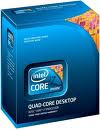Intel has unveiled 48-core processor
 San Francisco: Intel's research team has unveiled a 48-core processor that it claims will bring in a new era of immersive, social, and perceptive computing by putting datacenter-style integration on a single chip.
San Francisco: Intel's research team has unveiled a 48-core processor that it claims will bring in a new era of immersive, social, and perceptive computing by putting datacenter-style integration on a single chip.
It's not the long-awaited CPU-GPU mashup, Larrabee. This processor, formerly code-named Rock Creek and now known as Single-chip Cloud Computer (SCC), is a research item only. As Intel CTO Justin Rattner emphasized during his presentation on Wednesday to reporters in San Francisco, "This is not a product. It never will be a product." But the SCC does provide an insight into the direction into which Intel is heading - and the path the company is treading is many-cored.
Rattner characterized the many-core future to be more perceptive, saying that, "The machines we build will be capable of understanding the world around them as much as we do as humans. They will see, and they will hear, they will probably speak, and do a number of other things that resemble human like capabilities. And they will demand, as a result, very substantial computing capability."
But the ancestor of those future chips, the SCC, is up and running today - as Rattner pointed out while displaying a multi-die manufacuring wafer. "We're beyond the wafer level. We have packaged and running parts. This is not the typical Intel flash the wafer and then wait six months."
The SCC is the second-generation experimental processor in Intel's Tera-scale Computing Research Program, the first being the 80-core Polaris, which it demoed in 2007. While a move from 80 to 48 cores may seem like a step backwards, the SCC has one massive advantage over Polaris: its cores are fully IA-compliant. Polaris was purely a proof-of-concept part. The SCC, by contrast can do actual work - which Rattner and his crew demoed.
Previous post's: Indian Stock Market & Equities markets








